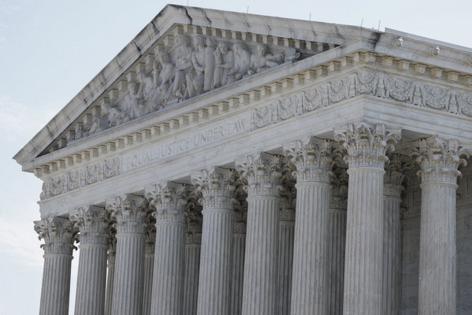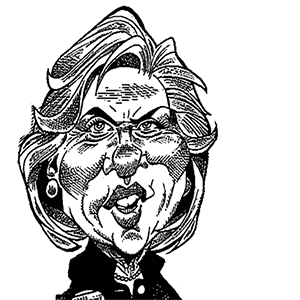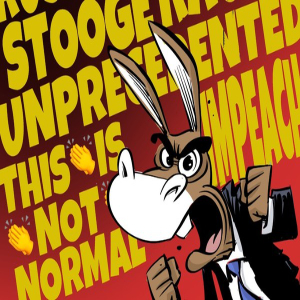Supreme Court to consider ban on race-based voting districts
Published in Political News
WASHINGTON — The U.S. Supreme Court indicated it will consider outlawing the use of race in drawing voting maps, setting up a blockbuster showdown with implications for dozens of congressional districts with predominantly minority populations.
Expanding a Louisiana case already on their docket, the justices on Friday said they will consider arguments that the 1965 Voting Rights Act no longer provides a legitimate basis for map-drawers to intentionally create majority-Black or majority-Hispanic districts.
The clash could also upend state and local legislative districts, giving it the potential to have a seismic impact on elections at every level of the U.S. system. The U.S. House had 11 majority-Black and 31 majority-Hispanic districts for the 2022 election, according to a Bloomberg News analysis of the most recent American Community Survey data.
The showdown comes at an already tumultuous time for congressional maps. Texas Republicans are pushing to redraw their lines in an unusual mid-decade redistricting to create three to five new GOP seats. Democrats in California and New York have said they will seek to reopen their districts in response.
Those efforts could determine whether Democrats retake control of the House, giving them the ability to stall President Donald Trump’s legislative agenda and use the subpoena power to aggressively investigate his administration.
The Supreme Court for decades has interpreted the Voting Rights Act to require the creation of heavily Black or Hispanic voting districts in many circumstances. The landmark law was passed to prevent obstacles Black Americans in the South faced to voting, such as poll taxes, literacy tests and intimidation.
The court’s conservatives have questioned whether that practice remains constitutionally justified by current conditions. Critics contend the Voting Rights Act is still relying on factual findings from 1982, though Congress reauthorized the law in 2006.
Second Argument
The court was originally scheduled to resolve the Louisiana case in the nine-month term that ended in late June. But in an unusual move, the justices instead said on June 27 they would hear a new round of arguments and potentially add other legal issues to the mix.
The high court’s order Friday said the justices will consider whether the creation of a second majority-Black congressional district in Louisiana violated the U.S. Constitution. The order also pointed to arguments made by challengers to the district in a court filing last year.
“The authority to conduct race-based cannot extend indefinitely into the future,” the challengers argued in that brief, quoting from a 2023 opinion by Justice Brett Kavanaugh.
The stakes are “enormous,” said Rick Hasen, an election-law expert at UCLA School of Law, in a blog post. “I was worried the court would put the VRA’s constitutionality into question when there was this great delay in the court ordering supplemental briefing. Something big was happening behind the scenes.”
Louisiana drew the lines in response to a lower court decision that said the state, which has six congressional seats and a 33% Black population, probably needed such a district to comply with the Voting Rights Act.
Protecting Johnson
The result was a new 6th District, which runs a jagged 250-mile course from Shreveport to Baton Rouge, scooping in heavily Black areas along the way. The map preserved the districts of key congressional Republicans, including House Speaker Mike Johnson, while opening the way for Democrat Cleo Fields to capture the 6th District in last year’s election.
The Supreme Court let that map go into effect in 2023, weeks after backing a majority-Black district in Alabama in a similar fight.
A different group of voters then opened a new front in the fight. Describing themselves as “non-African Americans,” the voters sued on the grounds that Louisiana had relied too heavily on race in violation of the Constitution’s equal protection clause.
That case went before a three-judge panel, which blocked the new map as unconstitutional. The Supreme Court reinstated the districts weeks later, indicating that the April 2024 lower court ruling had come too close to the election to take effect immediately.
The Supreme Court later said it would hear arguments to consider whether the map could be used for the rest of the decade. During that March session, some of the court’s conservatives questioned the constitutionality of race-based districts, though Kavanaugh, a potentially pivotal justice, said opponents of the map might have forfeited that argument by not raising it earlier.
The Supreme Court’s decision in the case isn’t likely until next year. That’s probably too late to directly apply to the 2026 election, though the decision to take up the issue could embolden map-drawers to eliminate majority-minority districts even before the court rules.
The data compiled by Bloomberg on minority districts is based on citizen voting-age population and the 2022 election maps. Alabama and Louisiana each added a second majority-Black district for the 2024 election in the face of court orders, while North Carolina may have eliminated one.
The cases are Louisiana v. Callais, 24-109, and Robinson v. Callais, 24-110.
_____
(With assistance from Gregory Korte.)
©2025 Bloomberg L.P. Visit bloomberg.com. Distributed by Tribune Content Agency, LLC.

























































Comments